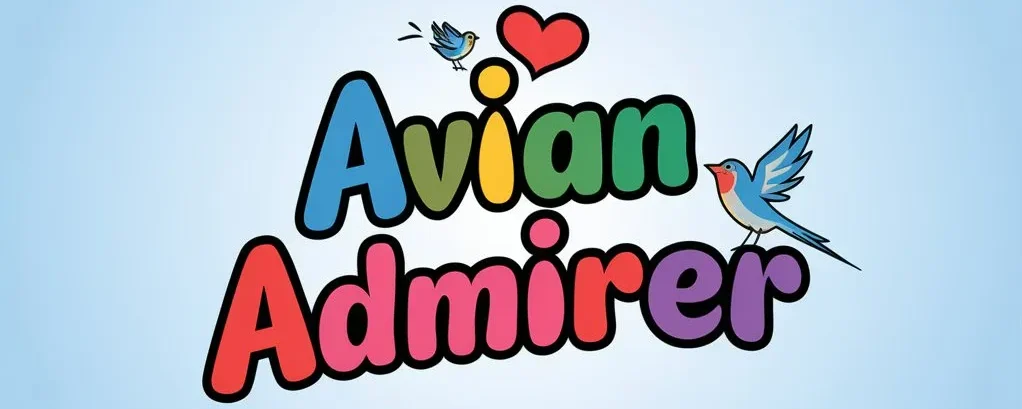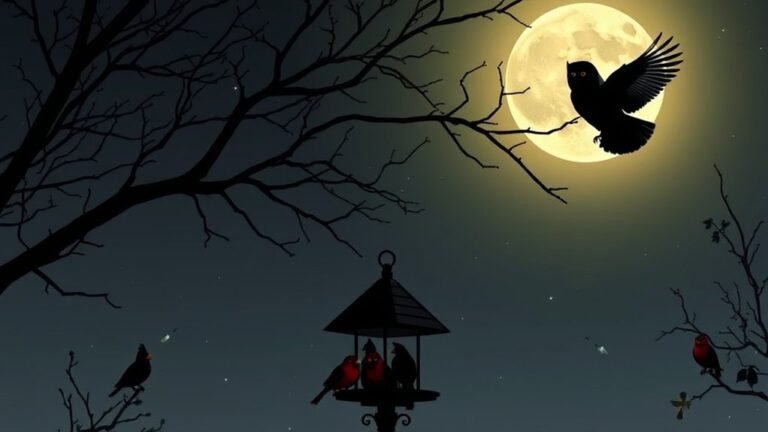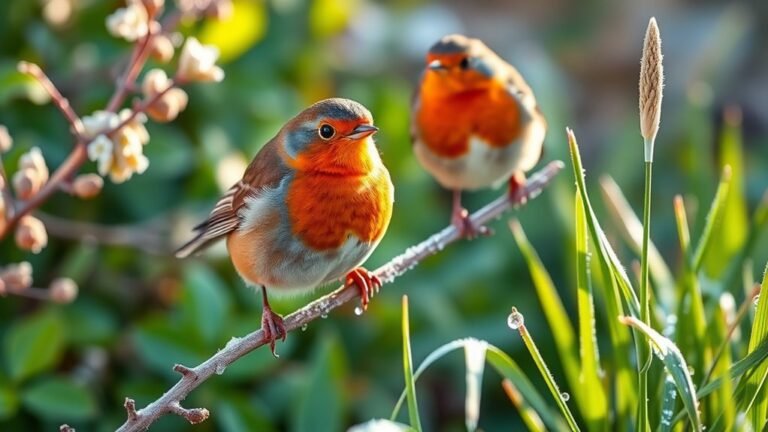Water Birds of North Carolina: Wetland Wonders
Water birds in North Carolina are important for wetland health. Each species, like the Great Blue Heron and the American Bittern, has unique adaptations for survival. Observing their behaviors helps us understand their roles in the ecosystem. However, these birds face many threats that can harm their populations. Recognizing these challenges is crucial for creating effective conservation plans. What actions can we take to protect these amazing creatures?
Key Takeaways
North Carolina's wetlands are home to a variety of water birds, including ducks, geese, and herons. These birds contribute to the region's ecological diversity. The Great Blue Heron stands out for its fishing skills and prefers to nest in tree colonies near water.
However, water birds in North Carolina face threats from habitat destruction, invasive species, and climate change. To protect these species, conservation efforts such as habitat restoration and community engagement are essential.
Birdwatching hotspots like Mattamuskeet and Pea Island National Wildlife Refuges provide great opportunities to see both migratory and native water birds. Exploring these areas can be a rewarding experience for nature enthusiasts.
The Diversity of Water Birds in North Carolina

North Carolina has many wetlands, estuaries, and coastal areas that host a variety of water birds. You can find ducks, geese, and herons in these ecosystems.
Many waterfowl migrate here during winter. They travel long distances to find safety in this environment. Observing these birds allows you to see their behaviors and understand their importance in the food web.
To help these bird populations survive, it's essential to protect their habitats. Maintaining healthy wetlands and estuaries is crucial. By doing so, you support their preservation for future generations.
Engaging with this ecosystem helps you feel connected and responsible for nature. Enjoying these magnificent birds brings us together in appreciation of our environment.
Great Blue Heron: The Majestic Fisher
The Great Blue Heron is a prominent water bird in North Carolina. It often wades through shallow waters to catch fish.
Its fishing methods include:
- Stalking: The heron moves slowly and quietly to approach its prey.
- Strike: The heron quickly extends its long neck to catch fish with accuracy.
- Diverse Diet: The heron eats various aquatic animals, including fish and amphibians. It adjusts its hunting style based on what's available.
Besides hunting, the heron has interesting nesting habits. It builds large nests high in trees close to water.
Many herons often nest together, creating a strong community. This majestic bird enhances the beauty of North Carolina's wetlands.
American Bittern: Masters of Stealth

In wetlands where Great Blue Herons stand by the water, you can find the American Bittern.
This bird is skilled at staying hidden as it hunts for food. It blends in with tall reeds thanks to its patterned feathers. The bittern remains motionless, waiting patiently to spot its prey. When it sees a fish, frog, or small invertebrate, it moves quickly to catch it.
This hunting style highlights the bittern's patience and ability to adapt to its surroundings.
Watching the American Bittern hunt reveals its skills and shows the balance of life in North Carolina's wetlands.
This connection to nature helps us appreciate these vibrant ecosystems.
Egret Species: Elegance in Flight
Egrets attract attention with their beauty and grace in flight. Their striking feathers and smooth movements create a breathtaking sight in North Carolina's wetlands.
When you watch them fly, you'll see how well they land, often mirrored in the calm waters below. Here are some details to enhance your understanding:
- Species Differences: The Great Egret and Snowy Egret have different feather patterns that help them adapt to their environments.
- Seasonal Movement: Egrets migrate each season, traveling long distances while maintaining their graceful style.
- Hunting Methods: Their hunting techniques, such as stalking slowly, show the balance between grace and survival needs.
Each observation strengthens your bond with these beautiful water birds.
The Role of Water Birds in Ecosystems

Water birds are vital for healthy ecosystems. They act as both predators and prey.
Their nesting behaviors shape their habitats, providing shelter for various species and boosting biodiversity. These birds help control insect populations, which supports ecological balance.
They're key parts of food chains, eating small fish and invertebrates and serving as food for larger predators like eagles and alligators.
Their feeding also aids in nutrient cycling, promoting plant growth in wetlands. Observing water birds in North Carolina shows how interconnected our ecosystems are.
This highlights the importance of conserving these unique creatures and their habitats.
Threats Facing North Carolina's Water Birds
North Carolina's water birds play vital roles in their ecosystems but face many threats that endanger their survival. Here are the main challenges:
- Habitat Destruction: Urban development, farming, and pollution lead to the loss of wetlands. These activities disrupt nesting and feeding areas for water birds.
- Invasive Species: Non-native plants and animals compete with local bird species. They often take over habitats and reduce resources for native birds.
- Climate Change: Changing weather patterns and rising sea levels threaten breeding success and food supply for these birds.
Understanding these threats is crucial.
Taking action to protect water birds and their habitats fosters a stronger connection to nature and highlights the importance of preserving our environment.
Conservation Efforts and Their Impact
Conservation efforts to protect North Carolina's water birds are essential to reduce the threats they encounter. Habitat restoration projects create vital nesting and feeding areas, helping to maintain healthy bird populations.
For example, restoring native plants in wetlands supports diverse ecosystems that benefit these birds.
Community involvement is also important. Local volunteers often participate in clean-up events and monitoring programs. This strengthens their bond with these beautiful birds.
Education programs empower residents and promote a shared responsibility for conservation.
The collaboration between habitat restoration and community participation boosts bird populations and fosters a sense of belonging among those who appreciate North Carolina's natural environment.
Together, we can create positive change and protect these valuable species.
Birdwatching Hotspots in North Carolina
Looking for the best spots for birdwatching in North Carolina? The state offers many great locations to see beautiful water birds.
Check out these three top spots:
- Mattamuskeet National Wildlife Refuge: This large area attracts many migratory birds. You can easily spot ducks and herons from various viewing points.
- Pea Island National Wildlife Refuge: This refuge has diverse ecosystems. Use the trails and observation platforms to see shorebirds and warblers.
- Alligator River National Wildlife Refuge: This location is great for discovering less-common bird species. Its unique landscape provides many opportunities to learn about their behaviors.
Follow these birdwatching tips to enjoy your experience more, and connect with others who also love birdwatching in North Carolina!
How to Support Water Bird Conservation
As you visit North Carolina's water bird habitats, think about how your actions can help conserve them.
Joining habitat restoration projects is important for maintaining these ecosystems. You can volunteer with local groups that work to protect wetlands, giving your time and resources to support these vital areas.
Getting involved in your community is also crucial. Attend educational workshops or birdwatching events to increase awareness and inspire others to take action.
Advocate for policies that protect water birds and their habitats. Your individual contributions, along with those of others in the community, can create a strong impact that supports the conservation of North Carolina's water bird populations.
Together, we can ensure these beautiful birds thrive for future generations.
Frequently Asked Questions
What Types of Habitats Do North Carolina's Water Birds Prefer?
North Carolina's water birds prefer habitats like marshes and estuaries. These areas provide the food and shelter they need for feeding and nesting. You can see these birds thrive in places rich in plants and animals, which help them survive and raise their young. Enjoy watching these beautiful birds in their natural environments!
When Is the Best Time to Observe Water Birds in North Carolina?
The best times to observe water birds in North Carolina are during dawn and dusk. Many water bird species are active at these times, allowing for better chances to see their unique behaviors and interactions. Observing them during these periods can enhance your bird-watching experience, making it more enjoyable and rewarding.
How Can I Identify Different Water Bird Species?
To identify different water bird species, focus on their physical traits. Look at their size, color, and bill shape. Keep a field guide handy. Observe their behaviors, such as feeding patterns and flight styles. Take notes during your observations. This will improve your ability to recognize various species. Enjoy the process of birdwatching and deepen your understanding of these fascinating creatures.
What Is the Migratory Pattern of Water Birds in North Carolina?
To understand the migratory patterns of water birds in North Carolina, observe their routes and behaviors throughout the seasons. Many water birds travel along specific pathways. They move based on food availability and climate changes. Tracking these patterns can be interesting and informative.
Can You Recommend Any Books on Water Birds for Beginners?
For beginners interested in water birds, I recommend "Sibley's Birding Basics." This book provides clear birding guides and identification tips. It offers practical advice to help you connect with nature and improve your birdwatching experience. You will learn more about different water bird species in an enjoyable way.

Ava is a bird enthusiast and nature lover who has spent countless hours observing and learning about the fascinating world of birds. With a passion for sharing her knowledge and inspiring others to appreciate the beauty of birds, Ava writes about her experiences and insights on avianadmirer.com.






